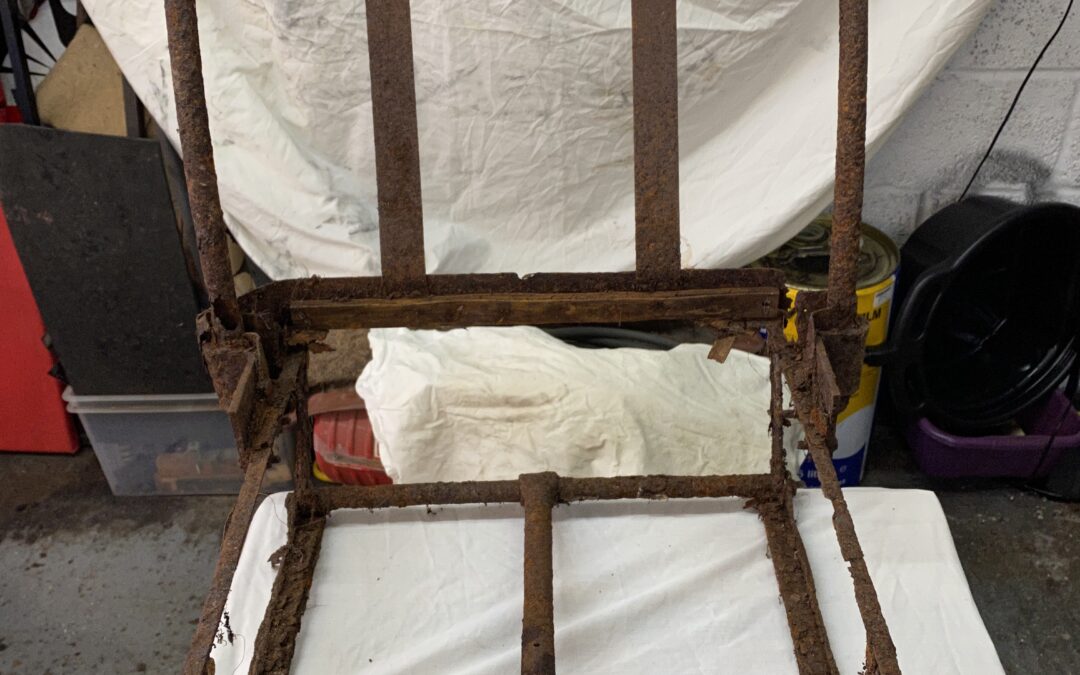The passenger seat is sadly beyond being restored, it has quite a few moving parts and all of them are either totally corroded (fused together) or they have rotted through. The hoop that supports the back of the seat has a lot of holes and is dangerously thin where strength is important. The frame is basically angle constructed from 3mm thick angle iron or flat bar and the seat is able to move backwards and forwards by turning a chrome handle at the front of the seat. That handle turns a long threaded bar which in turn push/pulls the upper part of the frame on brackets that rotate forwards/backwards. Its quite simple in concept and construction and I can see how it is *supposed* to work, but it is now one piece of rusted steel with holes.
First off – can I save the handle/threaded bar mechanism? Having removed it from the frame, I soaked all the parts that I thought were supposed to move with PlusGas, my ‘get-things-moving’ fluid of choice. It took repeated soakings over a two week period but in the end the handle moved a tiny amount – and that is all I needed to then agitate the handle within its range of movement until it slowly had a larger range and then was able to fully rotate. Cutting a long story short and with much cleaning of the coarse thread, the handle rotates freely and operates the threaded rod smoothly. This was great news, a crucial part of the seat mechanism was working again and can now be restored.
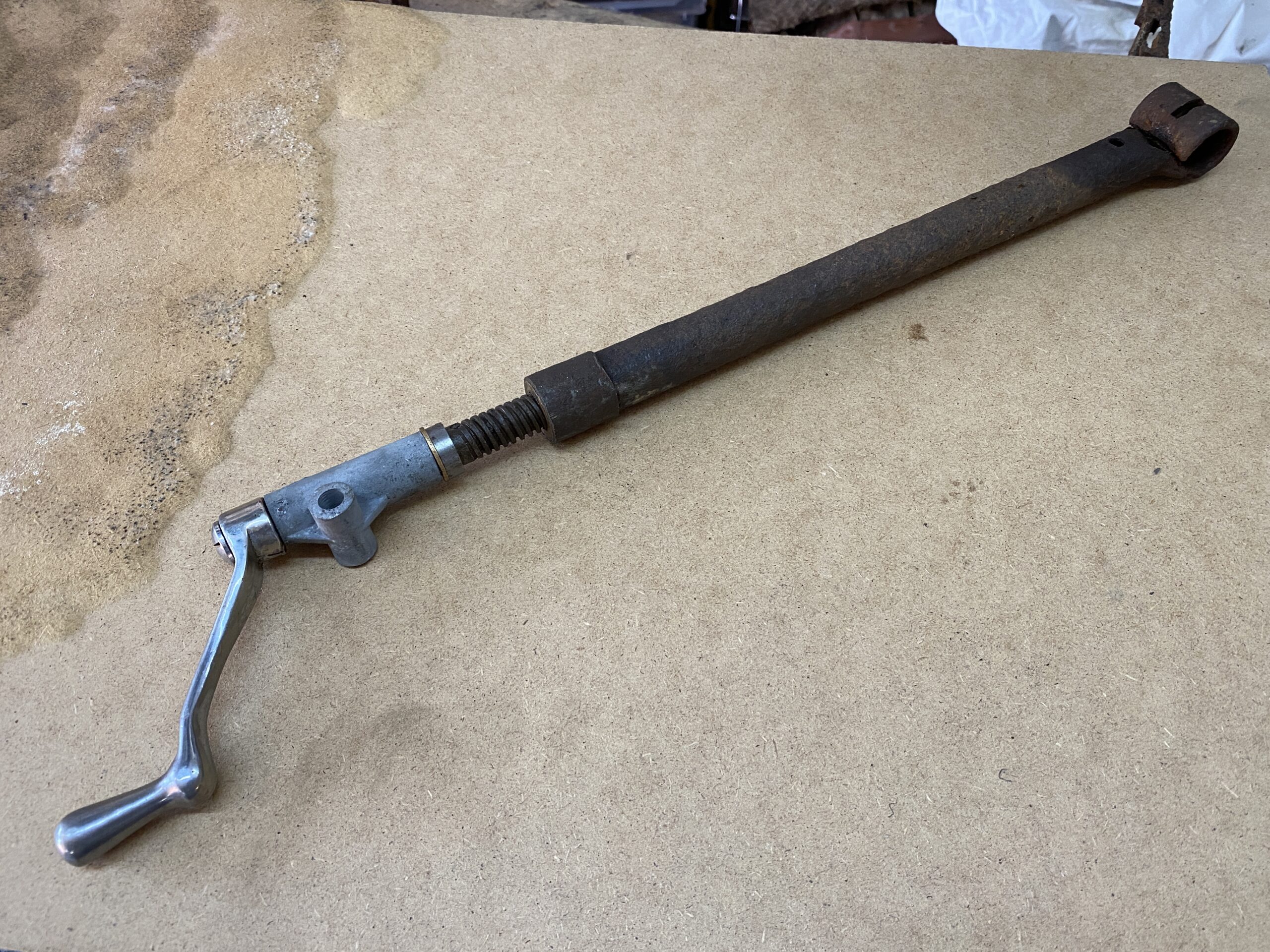
Next was measuring the frame components and ordering the replacement steel. Done but I have to wait a week for it to arrive. In the meantime How on earth do I bend 3mm thick 25x25mm Angle iron around a graceful curve like the front of the seat as seen below?
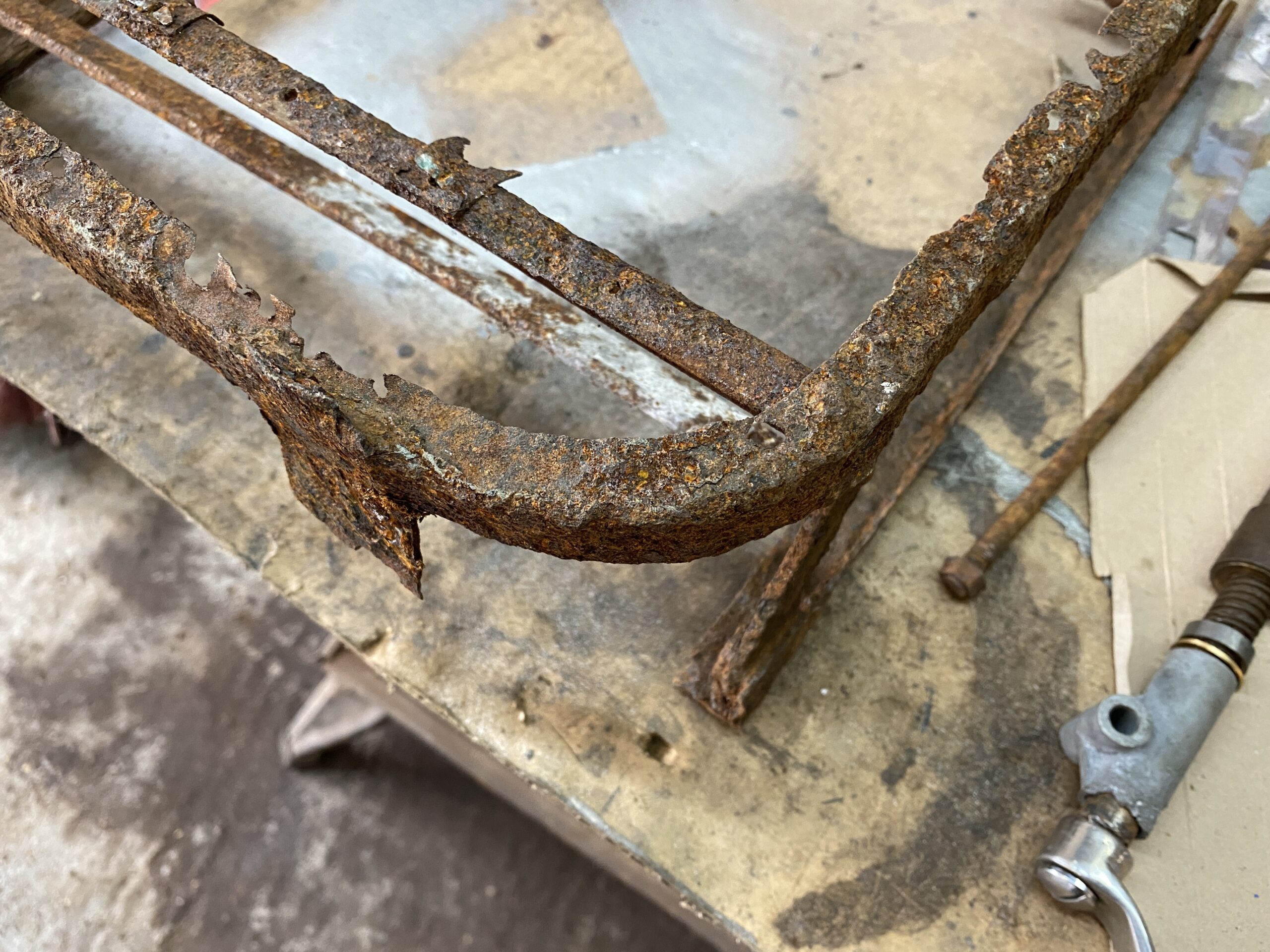
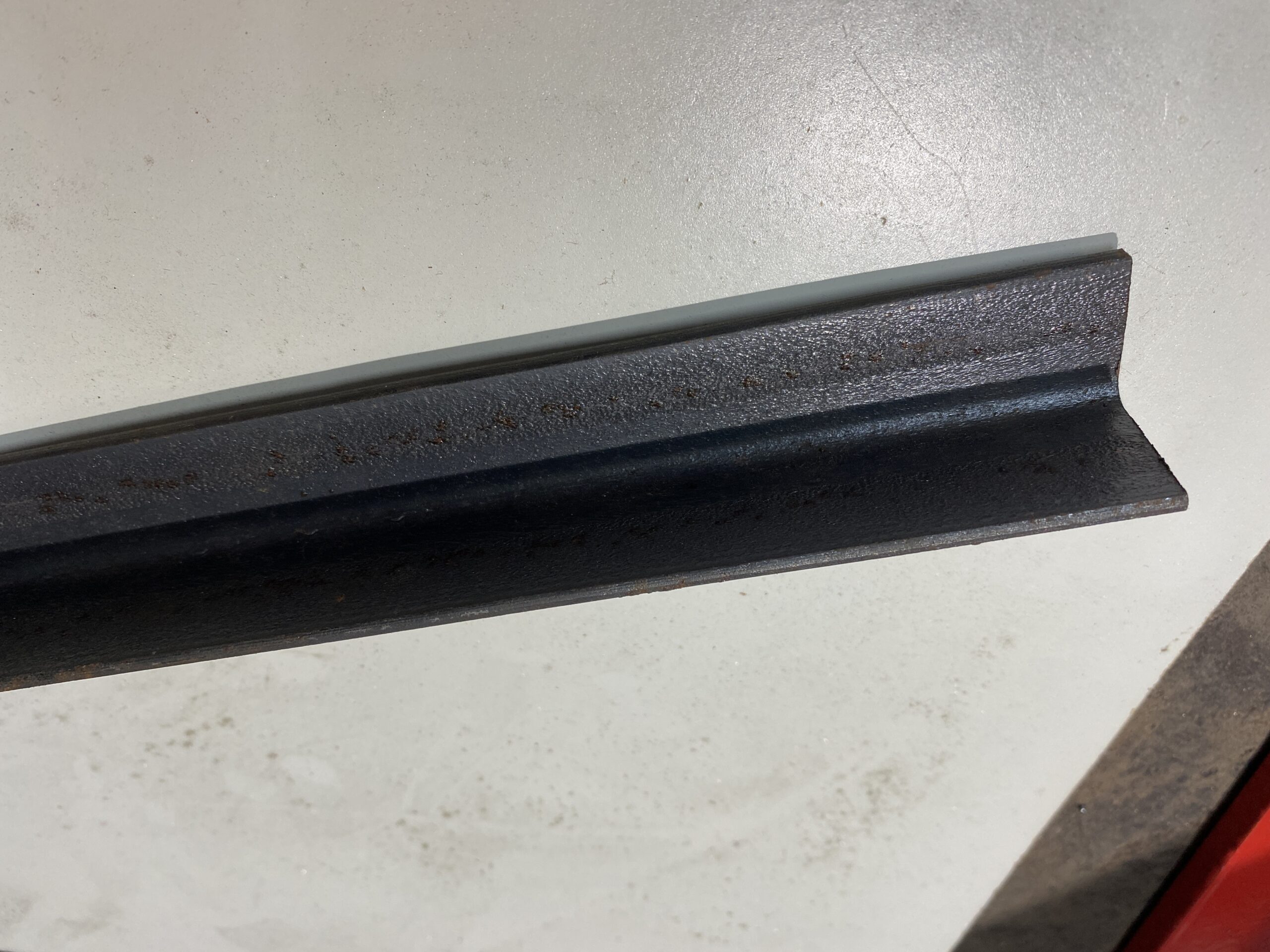
Angle iron by nature of the 90 degree angle resists being bent, flat bar however will bend relatively easily. So my theory, which should work given some patience was to cut a series of slots in one side of the angle iron so that the remaining solid side could be bent. The gaps in the cuts would close up as the metal was bent and all I had to do then was weld up the slots to create a solid piece of metal again. This did indeed work but I had to cut the slots, bend the metal, gently recut the slots so a new wider gap was produced, bend the metal and once more recut the slots and bend the metal. And voila, I now had a curved piece of angle iron that matched the profile of the seat radius:
Bend 1 below:
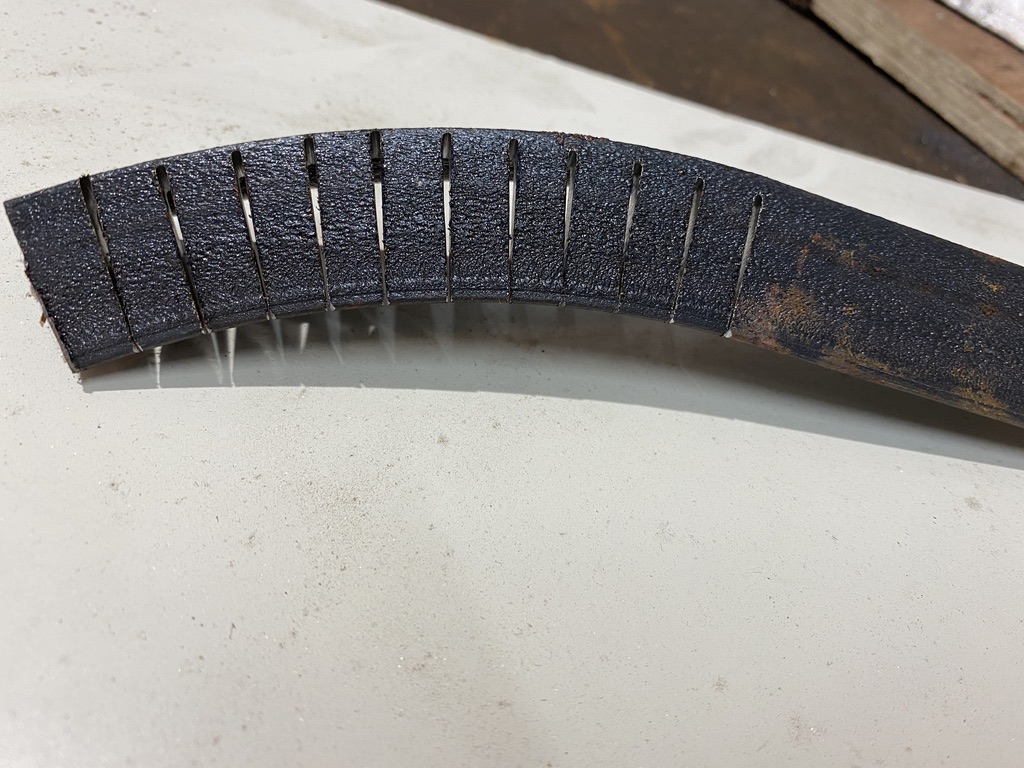
Bend 2:
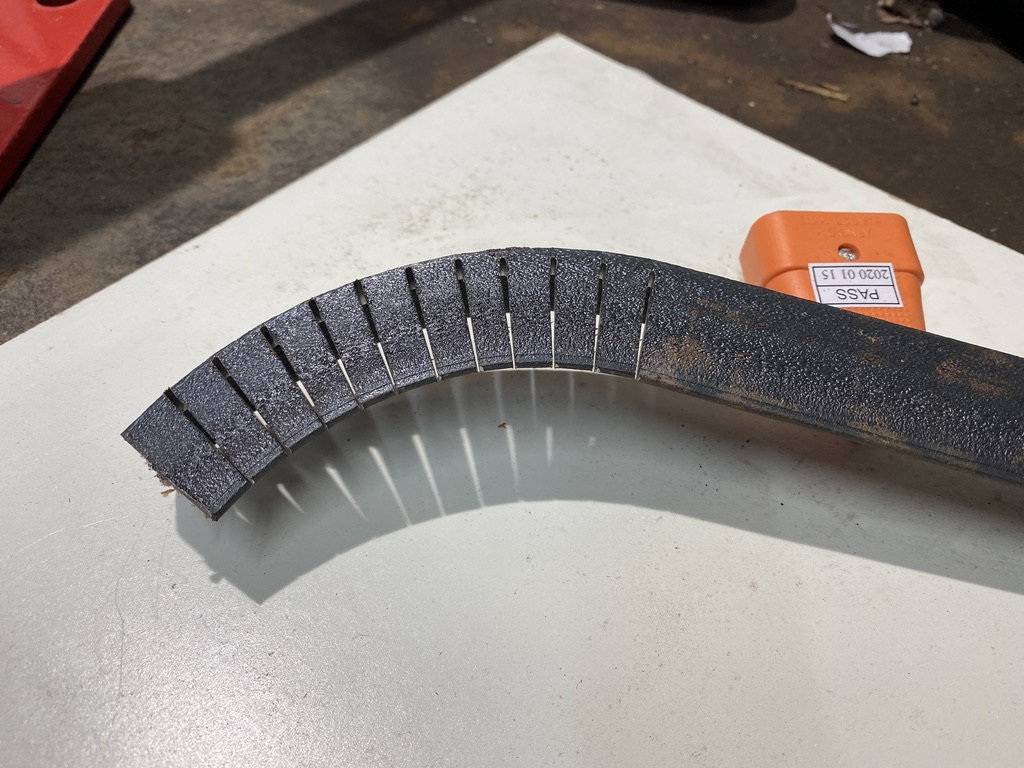
Bend 3:
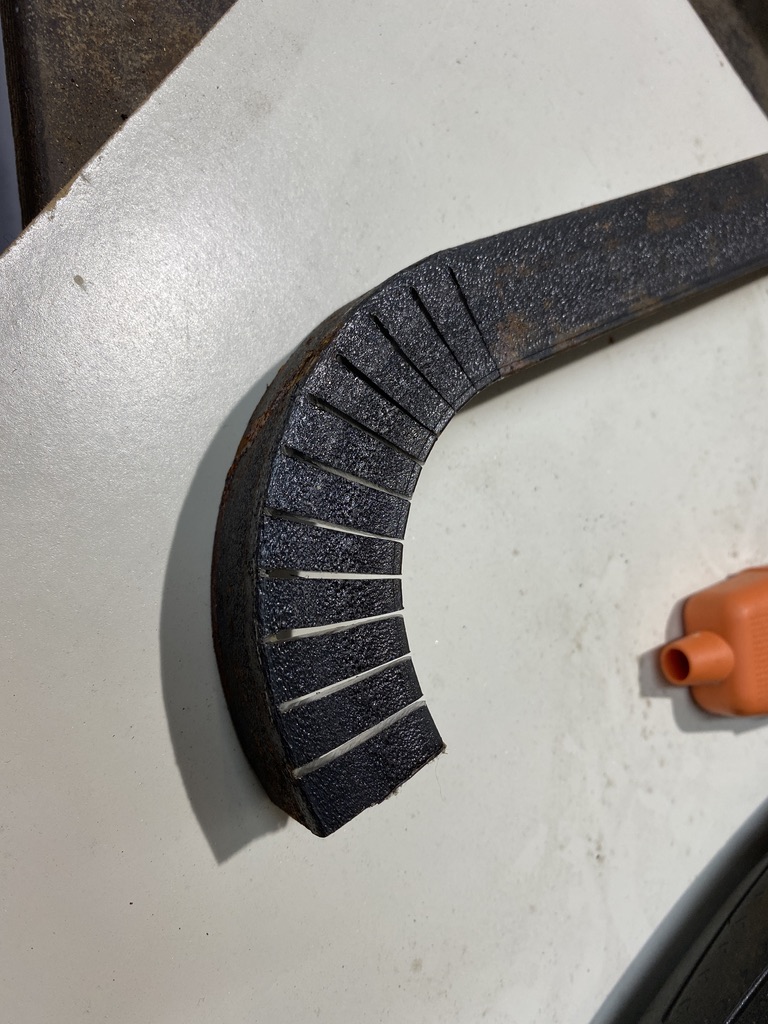
A trial placement – very slightly bent beyond 90 degrees – but it will do for a test piece.
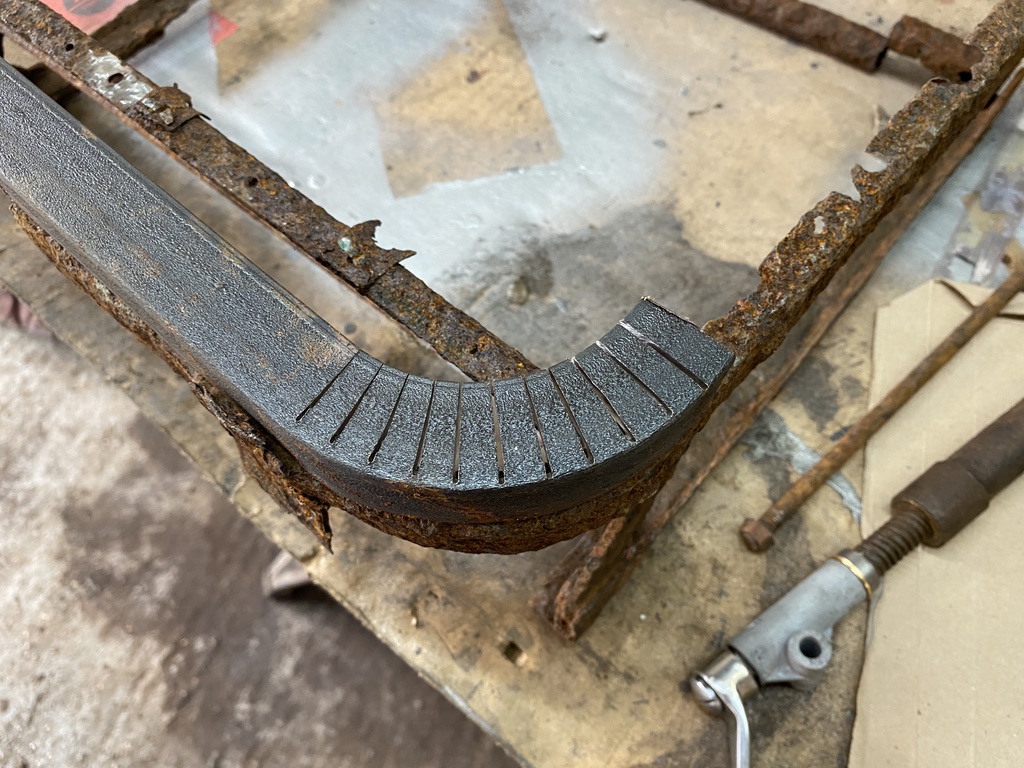
Now in theory I simply need to weld up the slots and grind them smooth.
In the pictures below, remember that this is just a test piece and NOT a piece of fabrication that I will actually use to rebuild the frame, so to be honest, I was not particularly worried about being careful with the welding accuracy or the speed of welding (as can be seen by the topmost weld which is horrible).
First tack weld the ends of the slots so they cant move, then fully weld the slots, then grind smooth.
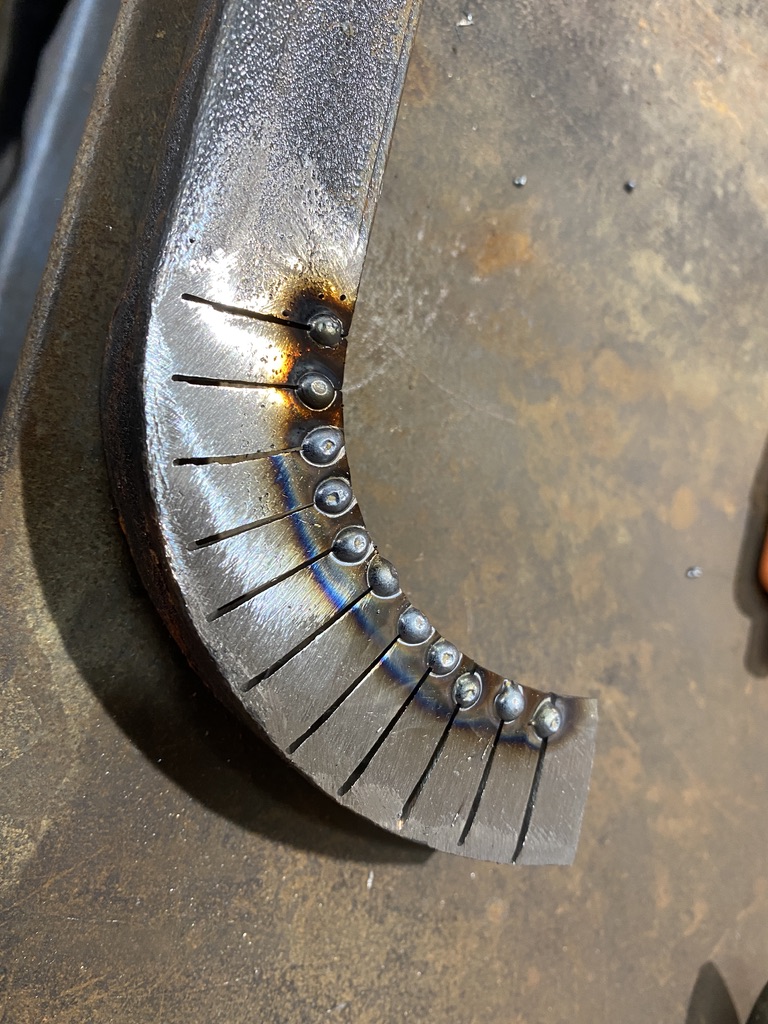
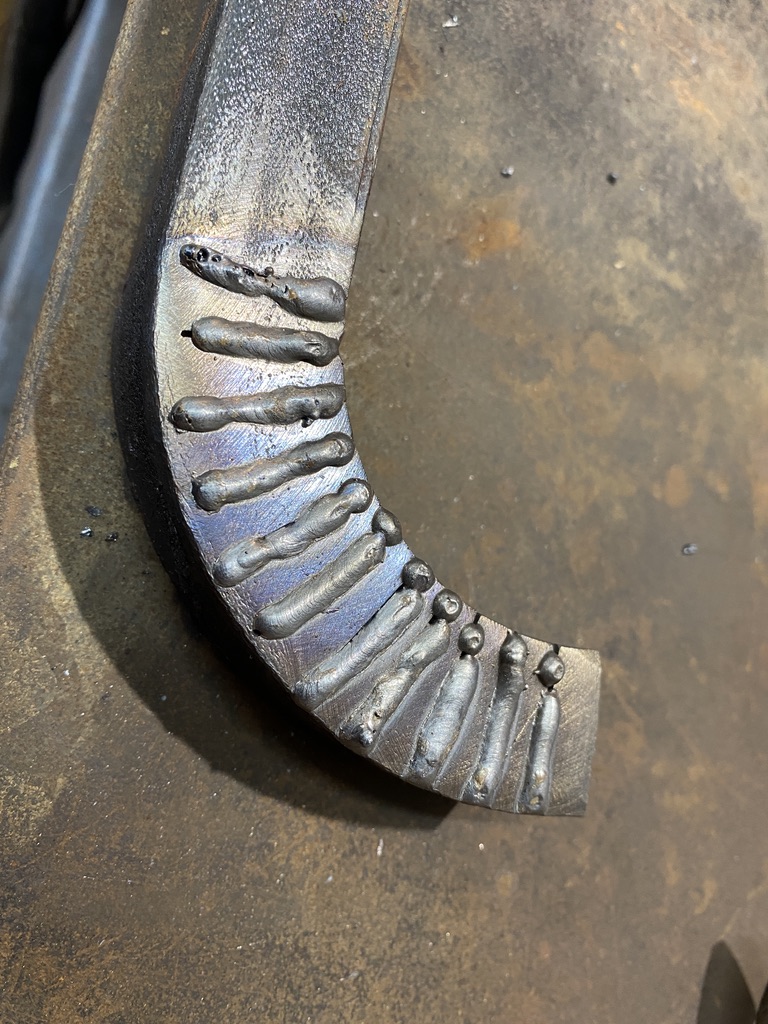
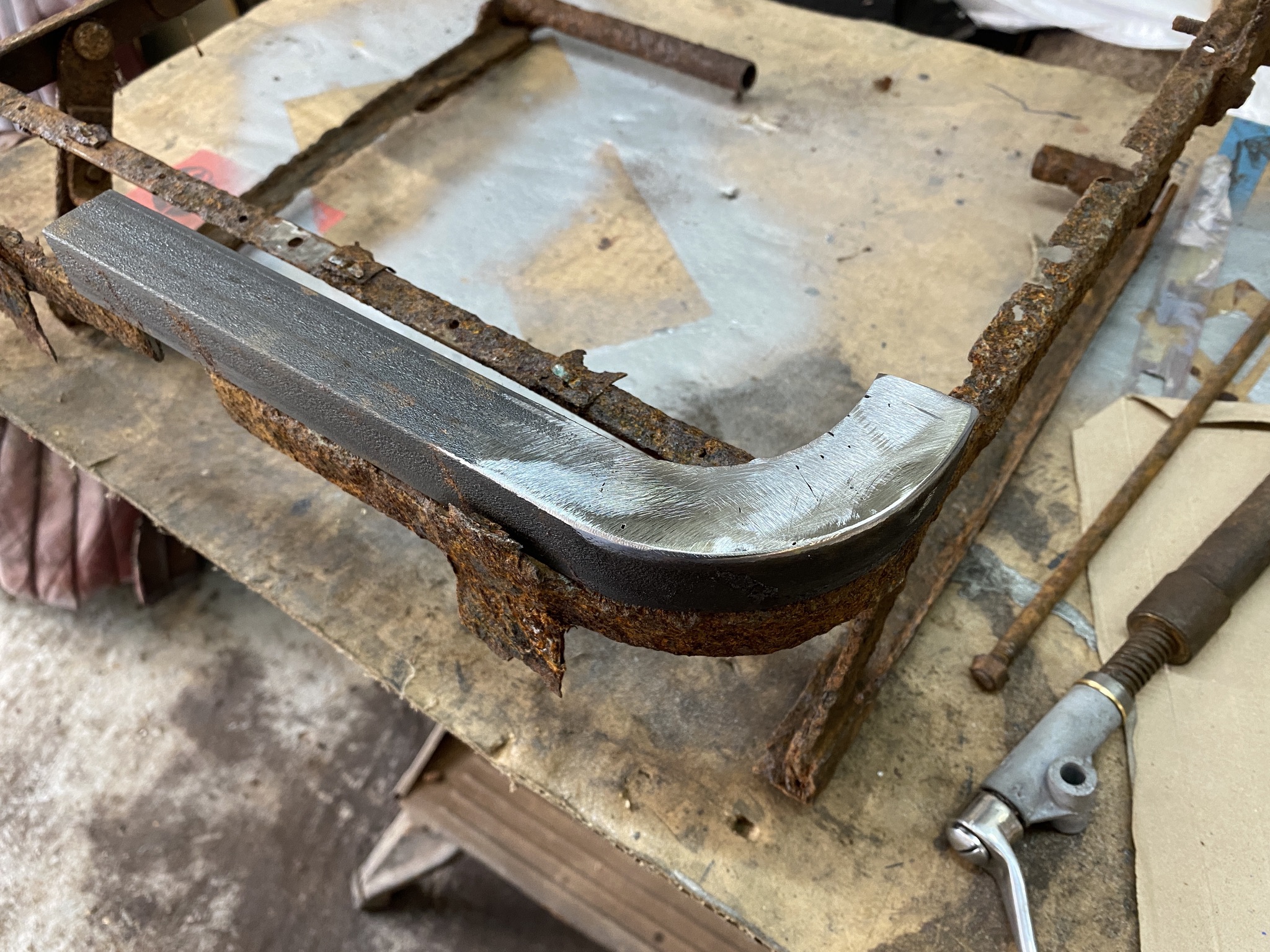
I think this more than proves the concept that I can actually fabricate curved angle iron, so I will now await delivery of the steel and look forward to making the entire top section out of one piece of angle iron to match the original.
